Key Points:
- Mid-band 5G networks are now demonstrating truly next-generation performance, but coverage and device compatibility issues remain a significant concern.
- Some worthy flagship 5G capable cellular integrated routers are now available - but none yet feature the next generation Qualcomm X60 or X65 5G modem chipsets.
- For T-Mobile, 5G is already worth investing in. Verizon is ramping up a lot in 2022. But AT&T customers really shouldn't worry too much about 5G until 2023.
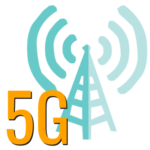
In our major 5G industry update last summer, we concluded:
"So while it might be tempting to invest in "future-proofing" now - by the time 5G networks have evolved to really take advantage of what is possible with all this underlying technology, there will likely be better (and more affordable) 5G hardware options on the market."
A lot has happened since then.
Some significant new 5G routers have begun shipping, and the 5G cellular networks themselves have evolved substantially in the past six months.
In particular - Verizon and AT&T have at last begun deploying mid-band spectrum capable of delivering truly next-generation-worthy 5G performance, and T-Mobile remains a step ahead and has even begun to show off 5G Carrier Aggregation that promises to take the potential of 5G to an entirely new level.
With all this momentum building - 2022 is looking to be the year that 5G, at last, starts to get really interesting.
But in some ways - things are still evolving frustratingly slowly.
Particularly when it comes to routers and mobile hotspots, the hardware available for purchase today still has some tradeoffs that need to be carefully considered. And despite the C-Band rollout - not every carrier will have much compelling 5G coverage to show off in 2022.
So is it time to jump on 5G train, or does it make sense to keep waiting?
For more on the basics of what makes 5G compelling, see our guide:
5G Cellular Data Fundamentals for Mobile Internet
Table of Contents
5G Industry Update Video
5G Network Update: Mid-Band Is Here, Sort Of
Throughout most of 2021, the big carriers were focused on delivering just enough widespread 5G coverage so that the bulk of their customers would actually see a "5G" icon show up on their fancy new phones.
But all too often, this 5G was just delivering (at best) "really good 4G" caliber performance - with very little actual next-generation capability to show for it all.
In much of the country, outside of a few key core urban areas, throughout 2021 only T-Mobile had a 5G experience worth bragging about.
The reason 5G was initially so underwhelming was because AT&T and Verizon were mostly just repurposing existing 4G/LTE spectrum for 5G - spectrum that was already in many areas congested to the breaking point.
Without dedicated spectrum to take advantage of - 5G devices were mostly left essentially running in 4G mode with just a little bit of a 5G veneer.
T-Mobile on the other hand had a lot of unused mid-band spectrum to take advantage of for 5G, thanks in large part to its acquisition of Sprint. This has allowed T-Mobile to pull dramatically ahead in delivering actual next-generation 5G capabilities.
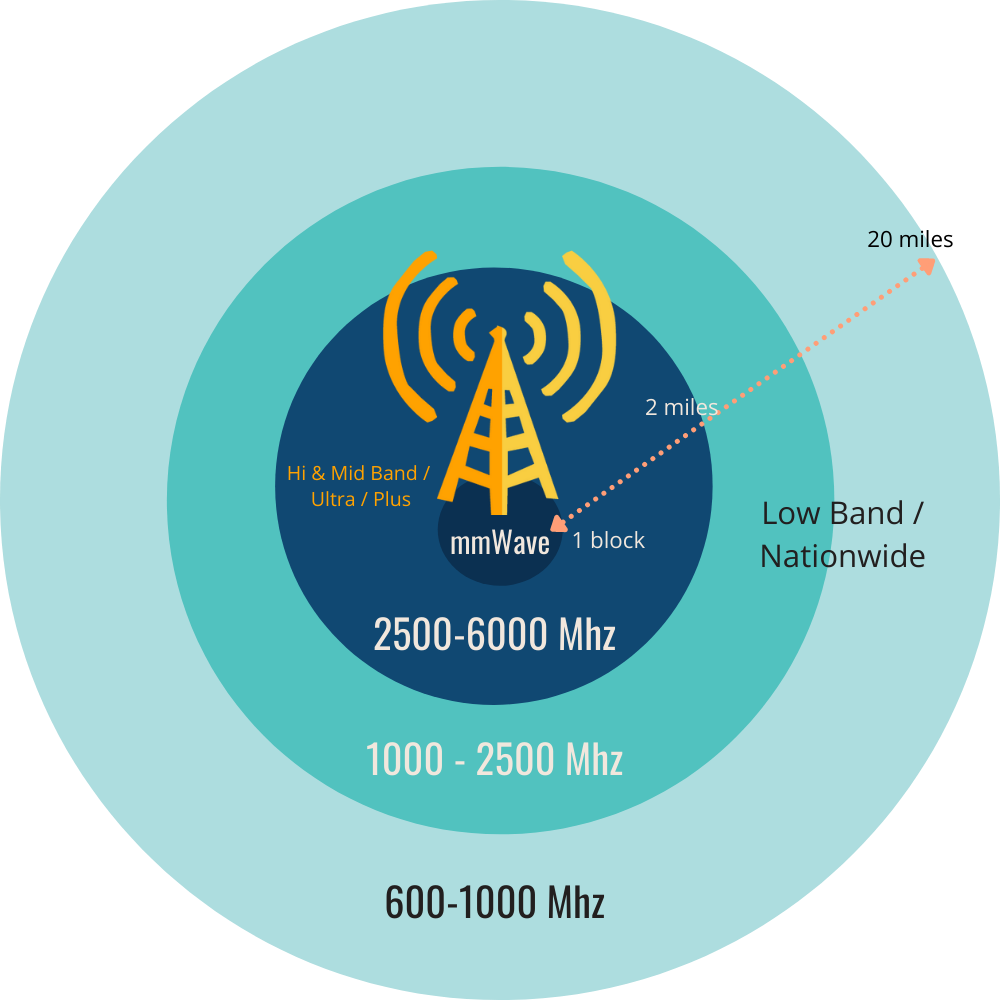
To catch up - AT&T and Verizon have focused their efforts on acquiring new C-Band spectrum, and in early 2022 those efforts are starting to bear fruit now that C-Band spectrum has at last been cleared for launch after a dramatic showdown between the FAA and the FCC over fears that C-Band might cause interference with airliners.
All of this mid-band (especially T-Mobile's band n41 and the C-Band n77 used by AT&T and Verizon) is considered to be the "Goldilocks" spectrum - fast enough to deliver a 5G experience that substantially outperforms even the best 4G, but long range enough to matter in places beyond just the core urban areas where short range mmWave makes sense.
So how are the carriers doing with their mid-band rollouts, as of February 2022?
Do AT&T and Verizon have what it takes to catch up with T-Mobile?
And what is the deal with the second C-Band auction that has just wrapped up?
C-Band Round Two: 3.45GHz Andromeda Spectrum
The C-Band spectrum that the FCC auctioned off in 2021 is the 280 MHz between 3.7 GHz and 3.98 GHz - a large chunk of airwaves that is suitable for deploying extremely fast 5G with much better range than mmWave spectrum that can only travel less than a block.
Verizon was the big winner in that auction, investing $53 billion to secure the most valuable C-Band licenses across the country, and AT&T also invested heavily to secure smaller chunks of this C-Band spectrum - much of which will not be cleared for use until the end of 2023.
But the FCC wrapped up a second C-Band auction last month - offering rights to a new chunk of airways ranging from 3.45 GHz to 3.55 GHz that some analysts have dubbed "Andromeda Spectrum" to make it distinct from the first batch of C-Band made available.
This time - AT&T was the big winner, spending $9 billion to grab the largest chunk of the Andromeda airwaves available.
This graphic makes it clear just how far ahead T-Mobile had jumped, and just how critical C-Band and Andromeda are for AT&T and Verizon catching up:
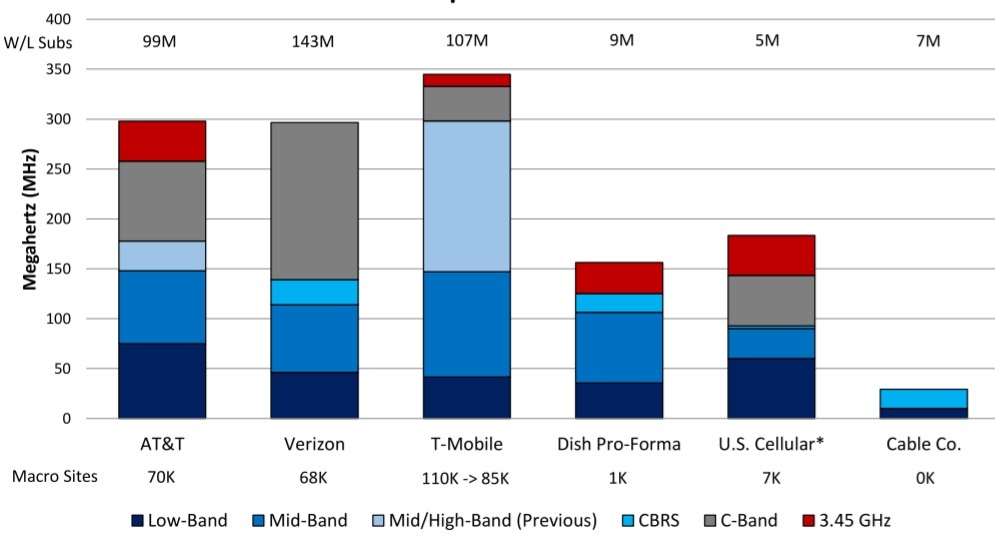
More spectrum = more capacity = more speed = less congestion - and the carriers having more spectrum to deploy is the key to making 5G truly worthwhile.
So when will all this spectrum end up put to use?
And what is up with Dish - will it ever launch its 5G "Genesis" network and rise up to become a new nationwide fourth carrier?
Here's the latest on the state of each carrier's 5G roadmap.
Andromeda Device Compatibility
The new Andromeda spectrum is just another chunk of the larger C-Band, otherwise known as 5G band n77.
But since the Andromeda spectrum is newly defined, it seems that not all current n77 supporting devices will be compatible - at least without a software update.
AT&T has already warned that most pre-2022 devices will likely NOT be updated to fully support Andromeda, and we suspect that Andromeda compatibility will only be possible in devices with the Qualcomm X65 modem (or newer), which is the first to support the newest 5G standards update (3GPP Release 16).
It is unclear how (and if) Andromeda compatibility will be indicated on spec sheets in the future. We'll have to wait and see how things shake out once the first Andromeda deployments begin to happen later this year.
T-Mobile: Still The 5G Leader
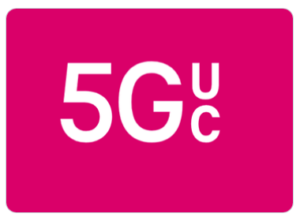
T-Mobile has been able to take the lead in 5G in large part because it hasn't had to deal with the complications of repurposing its 4G spectrum for 5G.
Instead - T-Mobile set aside a large amount of the 600 MHz low-band spectrum it won at auction years ago for 5G from the start (band n71), and T-Mobile purchased Sprint primarily to gain access to a huge swathe of mid-band spectrum (band n41) that Sprint had never really taken advantage of.
This has given T-Mobile a huge head start in delivering both 5G coverage, and speed.
Here are the two flavors of 5G T-Mobile is promoting:
- Extended Range 5G - Thanks to having unused 600 MHz spectrum to devote to 5G, T-Mobile has been able to deliver much more 5G coverage nationwide than the other carriers. T-Mobile claims its "Extended Range" 5G now reaches "nearly everyone in the country – more than 310 million people across 1.7 million square miles". This is impressive, but this network isn't next-generation fast.
- Ultra Capacity 5G - Using band n41 spectrum acquired from Sprint (and a few limited mmWave deployments), T-Mobile's rapidly expanding "Ultra Capacity" 5G networks is capable of delivering "speeds as fast as Wi-Fi" (clearly, they're talking about residential cable-based Wi-Fi, not the Wi-Fi many nomads encounter at RV parks & marinas) - a truly next-generation connection. T-Mobile claims to cover over 210 million people with Ultra Capacity 5G today, and this has been expanding rapidly.
More recently, T-Mobile has announced that it has begun to enable 5G carrier aggregation so that these bands can actually be combined and used at the same time.
Combining longer range 600 MHz 5G with short range mid-band 5G enables the long range connection to be used for your uplink to the tower, and the mid-band connection can then be used for a fast downlink over a much longer range than would be possible otherwise.
But this 5G carrier aggregation capability requires the absolute latest 5G modem chips (the Qualcomm Snapdragon X60 or better) - and at the moment only a very limited number of the latest smartphones (and no routers or hotspots) are compatible.
T-Mobile's biggest issue is that its backhaul (the connection upstream from cell towers to the internet) in many areas is actually not able to keep up with the demands on its network - leaving T-Mobile sometimes at a practical disadvantage despite its raw spectrum lead.
But in general, more so than on any other carrier - 5G hardware has the potential to shine on T-Mobile today.
Verizon: On The 5G Comeback Trail
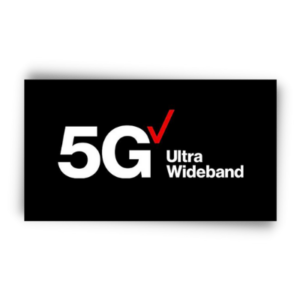
Verizon's initial 5G efforts focused on its "Ultra Wideband" mmWave technology, which is capable of delivering absolutely insane multi-gigabit real-world speeds.
But the short-range mmWave signals reach just a tiny percentage of Verizon customers, and coverage is currently only available in "parts" a just a few select cities - primarily only covering the downtown urban cores, stadiums, or airports.
Verizon is also using a technology called Dynamic Spectrum Sharing (DSS) to allow 5G to overlay on top of existing longer-range 4G/LTE bands, and it rolled out "5G Nationwide" coverage using DSS across a large part of the nation.
But because it is built on top of 4G, in practice "5G Nationwide" has little to offer over 4G in terms of coverage and performance. Even Verizon admits this type of 5G is nothing special:
"5G Nationwide runs alongside 4G LTE, and delivers a similar experience to Verizon’s 4G LTE network."
But now, in early 2022, Verizon's network is undergoing a massive transformation with C-Band expanding Verizon's Ultra Wideband coverage to 1,700 cities covering 100 million people - promising those customers a 10x increase in typical performance.
Verizon's coverage maps have been updated to show where C-Band is rolling out, but in our testing, those published maps are still extremely overly optimistic as the network is still literally in the process of being turned on as Verizon coordinates with the FAA to avoid any issues with airports.
Right now Verizon is providing a 3.5 mile buffer zone around 50 major airports, and that will be decreasing to 2 miles soon, and then (assuming the FAA raises no further objections) the C-Band restrictions near airports should be phased out over the summer.
Over the next few months, as Verizon's C-Band network gets tweaked and tuned, it will begin to make 5G compelling for a lot more Verizon customers.
But some 5G early adopters are being left behind, having purchased devices that lack the critical C-Band (5G band n77) compatibility - including the current M2100 5G mobile hotspot device sold by Verizon.
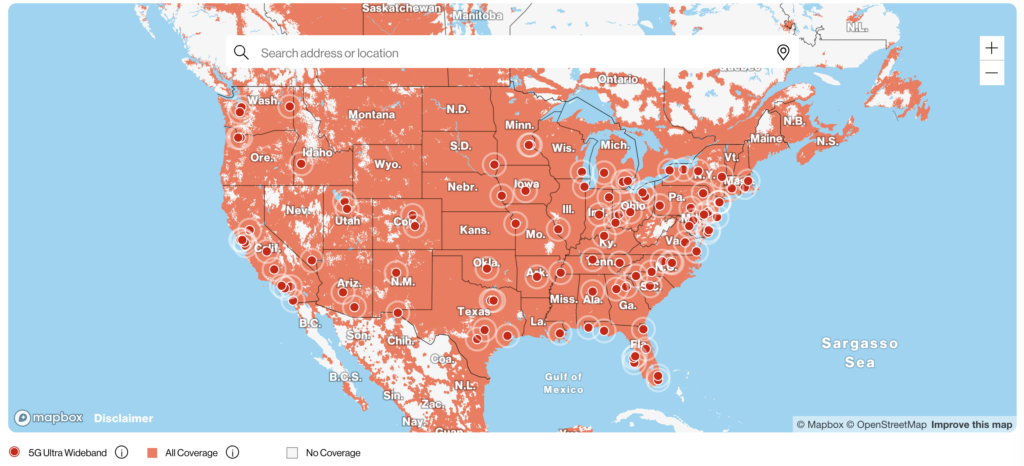
AT&T: Slowly Rolling Towards Andromeda
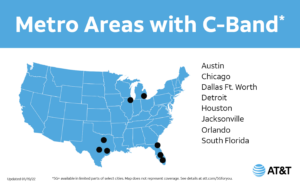
To avoid falling embarrassingly behind in 5G coverage, AT&T carved off a chunk of its low-band 850 MHz spectrum holdings to enable 5G band n5 to provide a reasonable amount of "nationwide" 5G coverage.
But this band is just repurposed 4G spectrum, and really has no performance advantage at all.
This means that 5G devices connected to AT&T are mostly just combining a single low-band 5G channel with AT&T's existing 4G bands. This technically counts as being "5G" - but in terms of performance, it is usually (at best) just "really good 4G".
Fortunately for AT&T - its 4G network has indeed gotten "really good" across much of the nation, and it is often fast and reliable.
But you don't need 5G hardware to take advantage of it!
Going forward - AT&T's big bet on truly enabling 5G's potential revolves around C-Band.
But unlike Verizon - AT&T is moving extremely slowly out the gate.
This is because AT&T has invested heavily C-Band spectrum that isn't available until late 2023, and now in Andromeda spectrum for which equipment is not ready yet. AT&T's mid-band plans revolve around two separate chunks of C-Band. Cell tower radios that can support these two chunks of spectrum simultaneously are not slated to be ready for deployment onto towers until sometime during the summer of 2022.
So rather than start upgrading cell towers now, and then have to go do it again once Andromeda-compatible gear is ready - AT&T is dragging its feet so that it only needs to upgrade its towers once.
This means that for much of the remainder of 2022 - AT&T is likely to keep falling further and further behind in the 5G race.
It will likely not be until sometime in early 2023 that AT&T's 5G network can even begin to truly compete with Verizon or T-Mobile.
And even once Andromeda is ready - even more so than the other carriers, AT&T will be dependent on the absolute latest in 5G devices to take advantage of all this spectrum. In particular - AT&T will require 3x 5G carrier aggregation (described below) to be able to combine Andromeda spectrum, regular C-Band, and low-band 5G together.
AT&T Executive Vice President of Technology Operations, Chris Sambar, told C-Net that only 2022 devices will be supported on the Andromeda network, and most older devices will likely NOT get updated to be able to use it: "The major flagship devices in 2022, the big devices from the big OEMs, will have 3.45GHz support, starting this year and going forward. ... We're not saying nothing [around upgrading older devices] but at this point, that's not in the plan right now. Doesn't mean we can't go backwards, but at this point no."
In other words - on AT&T, there is really no rush to get 5G gear. But if you do - it is worth it to make sure you are getting the absolute latest!
Dish Network: All Talk, No Action
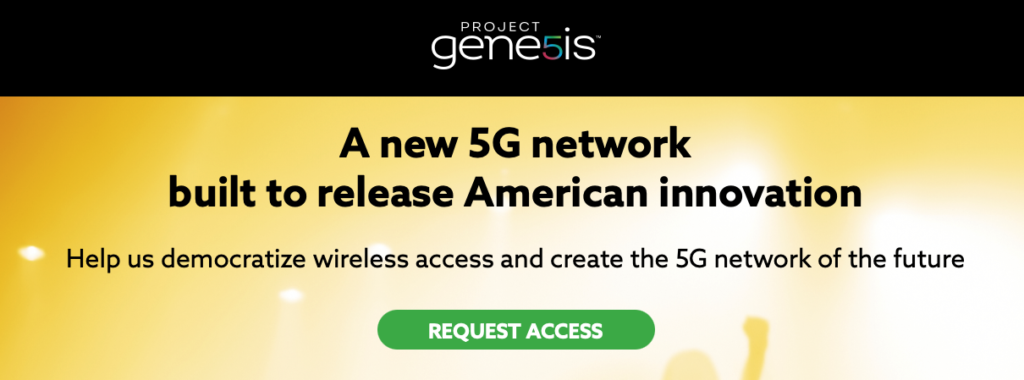
As part of the terms imposed in 2019 by the Department of Justice to approve the merger between T-Mobile and Sprint, T-Mobile agreed to give enough cellular spectrum and roaming rights to Dish Network so that Dish would have the resources to launch as a competitive new fourth nationwide cellular carrier.
Dish in return promised the DOJ that it would:
"Deploy a nationwide 5G broadband network covering at least 70 percent of the U.S. population by June 14, 2023."
So far, other than a few brief teases, Dish is showing little progress towards that goal.
Perhaps by the middle of 2022, we will actually see Dish begin to offer its "Project Genesis" 5G service in a few states.
But we expect that even where it launches service, Dish will be positioned as a low-cost, low-performance, low-end 5G network - trailing substantially behind the big three.
5G Modem Technology Update
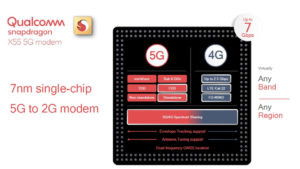
The 5G modem chip incorporated into any device pretty much defines the limits of its cellular capabilities - and not all 5G modems are created equally.
Chip-making giant Qualcomm is the leader in 5G modem chipsets, and very nearly all high-end 5G devices sold in the United States use Qualcomm modems to get connected.
This means that every phone, hotspot, and cellular router manufacturer is building on top of mostly identical foundations.
Understanding Qualcomm's offerings can help one to understand the capabilities of 5G devices that are coming to market - and can illustrate the reasons to potentially consider waiting for future generations.
Here are the 5G modem chips that Qualcomm has announced to date:
- Snapdragon X50 (Already Obsolete) - Announced in 2018, this first generation 5G modem enabled device manufacturers to bring out early devices that showcased raw 5G features and performance. But the X50 did NOT support 4G/LTE, meaning that it required devices to embrace the expense and complexity of having both a 4G and 5G modem chipset running in parallel. And the X50 lacked key 5G features like support for overlaying 4G and 5G via dynamic spectrum sharing, as well as running in 5G "standalone" mode. Basically, as we repeatedly warned - any device with the X50 was obsolete from the start.
- Snapdragon X55 (Currently Mainstream) - We covered the launch of the Snapdragon X55 in early 2019, and we recommended that people ignore the X50 and wait for this first "practical" 5G modem to arrive. And indeed, the X55 powered most flagship phones and other 5G devices that launched in 2020, including the iPhone 12 and every 5G mobile hotspot and router we have reported on to date. The X55 modem supports 2G, 3G, 4G/LTE, and 5G all on one chip - and includes support for standalone mode 5G and dynamic spectrum sharing. It is a chipset built for the present - but it is still lacking a few key features advantageous for the future.
- Snapdragon X60 (Smartphones Only?) - The X60 modem is available standalone or integrated into the Snapdragon 888 CPU, and this modem powers most of the flagship 5G phones introduced in 2021 - including the Samsung Galaxy S21 and the iPhone 13. The X60 introduces much more advanced 5G carrier aggregation capabilities (explained in more depth below) that should greatly improve 5G coverage and speed well into the future. This means that devices based on the X55 will be at a significant disadvantage in many locations compared to the X60. As of yet, we are aware of no 5G hotspots or routers that use the X60 modem.
- Snapdragon X65 (Just Now Shipping) - Announced in early 2021, the X65 (which is also integrated into the Snapdragon 8 Gen 1 CPU) will power the flagship 5G devices that come to market in 2022 - starting with the brand new Samsung Galaxy S22 line. The X65 is the first modem designed to the 3GPP Release 16 specification (aka "5G Phase 2") and will support three-way 5G carrier aggregation, and absolutely insane peak theoretical speeds of 10 Gbps (up from 7.5 Gbps of the previous generations). Plus, when running at a more leisurely pace it should be the most power-efficient 5G modem yet. Key new technologies include "Wideband Envelope Tracking" and "AI-Enhanced Signal Boost" that promise to deliver better performance in fringe signal areas, and Qualcomm has said that the X65 will improve sub-6 GHz coverage by up to 40%. The X65 will also be available in a lower-cost X62 version with lower peak performance potential, which will likely enable a wide range of future affordable mainstream 5G devices.
- Snapdragon X70 (Coming in 2023) - The X70 will be Qualcomm's flagship in 2023, and adds 4x 5G carrier aggregation and up to 60% improved power efficiency to allow for better battery life compared to its predecessors. The biggest connectivity gains will come from using even more advanced AI processing hardware inside the modem to help devices stay connected to marginal 5G signals - improving both speed and coverage.
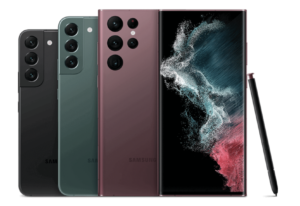
Where are the X60 and X65 router and hotspot options?
Though it was announced way back in 2019 - the Snapdragon X55 remains the only 5G modem chipset powering any of the cellular integrated hotspots and routers that we are aware of.
We suspect supply chain issues and the insatiable demand of the smartphone market has left no X60 chips available for more niche use cases like hotspots or routers, and it may ultimately be the case that the X60 gets skipped over in favor of the X65.
If this is the case - it might mean that the X55 remains the only modem available in 5G routers until sometime in 2023.
But the X60 and X65 have some very important future-proofing features around combing 5G bands for better range and performance, important features for our mobile audience often traveling on the fringes.
It is certainly worth understanding what this future hardware might be like before investing in X55 powered routers.
So the dilemma remains - wait for the X60 or X65, or settle for the X55?
Just how significant are the advantages of the newer modems?
The big difference revolves around 5G carrier aggregation.
NOTE: Just because two devices use the same modem - that doesn't mean that they will perform identically!
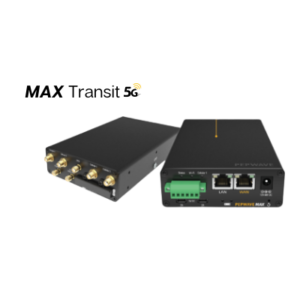
There are a lot of implementation details that can vary between devices from different manufacturers, even if they are based on the same modem chipset.
The actual modem chip might be the same, but the modem module (all the extra components and software drivers) might come from different manufacturers.
Supporting mmWave 5G, in particular, requires a lot of extra expensive hardware, and a lot of 5G data devices are focusing only on Sub-6GHz 5G and are leaving out mmWave support entirely.
Other components ranging from antennas to router CPUs are up to the device manufacturer too, and there are a whole host of both hardware and software features that may not be implemented by all makers.
Customers shopping for gear should in particular check the 4G and 5G bands a device supports - these can vary widely by manufacturer, even though they are all using the same X55 modem. Devices designed for a particular carrier may not implement bands that are used by their competitors, for example.
And older devices announced in 2020 might lack support for C-Band (n77), which will become critically important for 5G in the future.
And of course - the modem is just one small component of a cellular integrated router!
Overall router performance is also determined by the CPU used in the router, the internal connection speeds between components, and the Wi-Fi implementation.
Now more than ever before, mobile router design and specifications are critically important. In a 4G/LTE world, real-world cellular speeds were hardly ever going to push against the limitations of a router's capabilities, but 5G (and emerging satellite technologies like Starlink) have more potential to push routers to their limits.
The Increasing Importance of 5G Carrier Aggregation
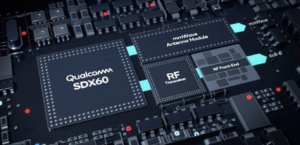
One of the key jumps between the X55 and X60 and X65 modems revolves around carrier aggregation - the ability of the modem to combine together multiple signals on different frequency bands.
To put it simply - both the X55 and X60 can combine together two 5G bands, but compared to the X60, the X55 is only capable of combining a very limited number of 5G band combinations together.
In particular - the X55 can NOT combine together low-band and mid-band 5G spectrum, or mid-band and mmWave.
Allowing a lower frequency long-range band to provide a reliable baseline and upload connection while simultaneously using a higher frequency band for download performance is the key to maximizing both speed and 5G coverage.
As carriers begin to roll out support for 5G carrier aggregation, the X55 will begin to be left behind - especially in the fringe areas so often frequented by RVers and Cruisers.
To better understand the geeky complications of combining different frequency types, see our deep dive feature last year:
The Importance of 5G Carrier Aggregations
Coming Next: Three-Way 5G Carrier Aggregation
The X65 modem goes even further - allowing for three 5G channels to be combined together.
In particular - AT&T will need to rely on three-way carrier aggregation to fully take advantage of the Andromeda C-Band spectrum it has purchased, which it will want to be able to combine with its other C-Band spectrum and with its longer-range low-band spectrum.
And T-Mobile is already starting to enable carrier aggregation to allow two band n41 channels to be combined.
Ultimately - this three-way capability will let carriers really maximize their 5G performance and network capacity.
5G Signal Enhancing Update
Another topic we are often asked about is signal enhancing for 5G gear - in particular, using external antennas and boosters to help keep connected in fringe areas.
5G Antennas
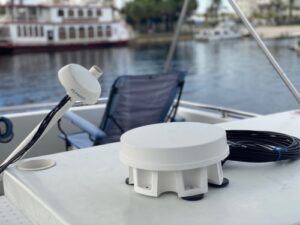
Though mmWave 5G signals require specialized antennas that must be closely integrated with the modem, Sub-6 GHz 5G uses signals that are not all that different than 4G/LTE - only there is a wider range of potential frequencies in use.
For this reason "5G Ready" antennas tend to be wideband antennas that are capable of tuning into signals over the entire range from 600 MHz to 6.0 GHz, not just on a few selected channels.
5G also relies heavily on MIMO - so 5G antennas tend to incorporate four antenna elements into a 4x4 MIMO configuration.
Because these "5G Ready" antennas also cover 4G frequencies, this is one area where it sometimes makes sense to upgrade sooner rather than later.
Over the past year, most antenna manufacturers have re-tooled their antenna designs to cover a wide 600-6000 MHz frequency bands to be better suited for 5G.
Use our 5G filter in our Antenna Gear Center to discover them. Our members also just got an advanced deep-dive video looking inside several current popular mobile antennas, helping them understand what makes antennas different from each other - this can be found in our Selecting Cellular Antennas guide.
5G Boosters
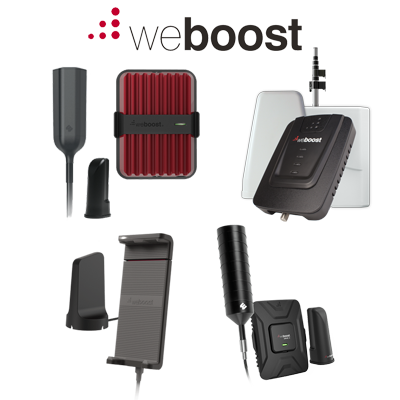
No significant new cellular boosters have come to market over the past year, but many cellular booster manufacturers have been claiming that their existing designs are '5G Compatible' or '5G Ready'.
Don't get too excited.
The reality of current cellular booster use for 5G remains... limited.
When 5G is broadcast over existing bands that a current 4G/LTE analog booster already supports, the booster will continue to work for both LTE and 5G. These boosters can't actually tell the difference.
But 4G/LTE boosters only currently support 6 (2, 4, 5, 12, 13, and 25) of the dozens of LTE frequency bands.
So as the carriers turn their existing 4G bands over to 5G, or overlay 5G and 4G simultaneously with dynamic spectrum sharing (DSS) - old-school analog boosters will continue to work as always, benefiting 5G cellular devices.
But these boosters will still only be boosting these existing bands - not any of the 5G-specific bands (like n41, n71, C-Band, or Andromeda) that actually deliver truly next generation performance.
For truly 5G native signal boosting, entirely new types of 5G signal repeaters will be required.
The Future: 5G Repeaters & Intelligent Surfaces
Because the fastest shorter range 5G signals are easily blocked by walls and other obstructions, carriers and hardware manufacturers are developing 5G repeaters that listen for a signal outdoors (usually focused on mmWave of mid-band), and then rebroadcast an entirely new signal indoors.
These sorts of devices, perhaps mounted in a window, will be key to mmWave signals, at last, reaching indoors into homes and businesses.
At first, these sorts of 5G repeated will likely be locked to a single carrier and focused on residential service. But over time this sort of 5G repeater may end up available for vehicles. In the future, integrated 5G repeaters may even come standard on some cars.
Looking further ahead - the 5G technology standards update on track for 2024 will actually define the concept of a "Smart Repeater" that works interactively with the carriers network to maximize indoor coverage, and the next update of the standards beyond that might even support low-cost "reconfigurable intelligent surface" technology that lets everyday objects be designed with special materials that can be used as "smart mirrors" to bounce mmWave 5G signals around corners and through walls.
All of this sci-fi sounding technology ultimately has the potential to allow the crazy speeds of mmWave 5G to break free of the current extreme range limitations - allowing mmWave to be useful over a larger area.
5G Data Plans Are Still Lacking
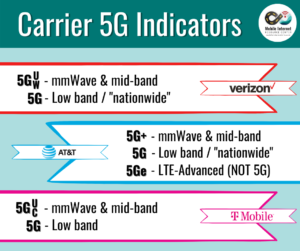
In a future world with widespread mmWave coverage, there will theoretically be enough bandwidth available for the carriers to offer truly unlimited data plans.
But until then - the carriers are likely to remain wary of encouraging too much data usage, especially in places with only low-band coverage. There just isn't enough capacity available.
Even mid-band networks will not have enough capacity to offer truly unlimited service in a lot of areas.
Because of this - we expect that we will continue to see carriers pushing fixed residential 5G plans with truly unlimited data only in the places they know they have ample capacity, and offering more limited mobile plans that can work anywhere.
Being stuck with hotspot data caps of around 50-100GB and streaming 480p video over 5G isn't anyone's idea of what a "next-generation" cellular experience should be.
Hopefully, once the networks start to evolve to have more capacity and capabilities - the carriers will begin to unleash more generous data plans to 5G customers, even if they are not truly unlimited for hotspot usage. We are already seeing Verizon (5G UWB) and AT&T (5G+) offering extra capabilities in mid-band areas.
For now, many legacy data plans many RVers and boaters are holding on to, have not had 5G turned on.
To keep up on all the latest cellular plan options, keep an eye on our ever-changing guide:
Top Cellular Data Plans for RVers & Cruisers – Verizon, AT&T, T-Mobile, and Sprint
5G vs Starlink
Both 5G cellular and SpaceX's Starlink have the potential to deliver a fundamentally better next generation connection than has been available before.
But both technologies are still early in their evolutions and are just getting started.
Starlink can deliver great download speeds and unlimited data, often in places far from any cellular signal. But Starlink currently has both limited mobility support and limited services areas, and many areas are already "at capacity". Starlink also does not work well with any obstructions - making it best for wide open desert camping. Starlink is not at all well suited to camping in the forest.
5G on the other hand has limited data plans, and limited coverage. But when you can get a signal, 5G has the potential to deliver faster downloads and substantially faster uploads than Starlink is capable of. 5G performance in urban and suburban areas has the potential to be phenomenal, and you can get connected even while in motion, or parked in the shade.
So which will come out on top?
Neither.
Starlink and 5G should not be thought of as an either/or choice. Cellular and satellite are actually destined to complement each other - and nomads wanting to get connected reliably in the widest range of locations should be planning ahead for how to best use these two technologies so that they can work together.
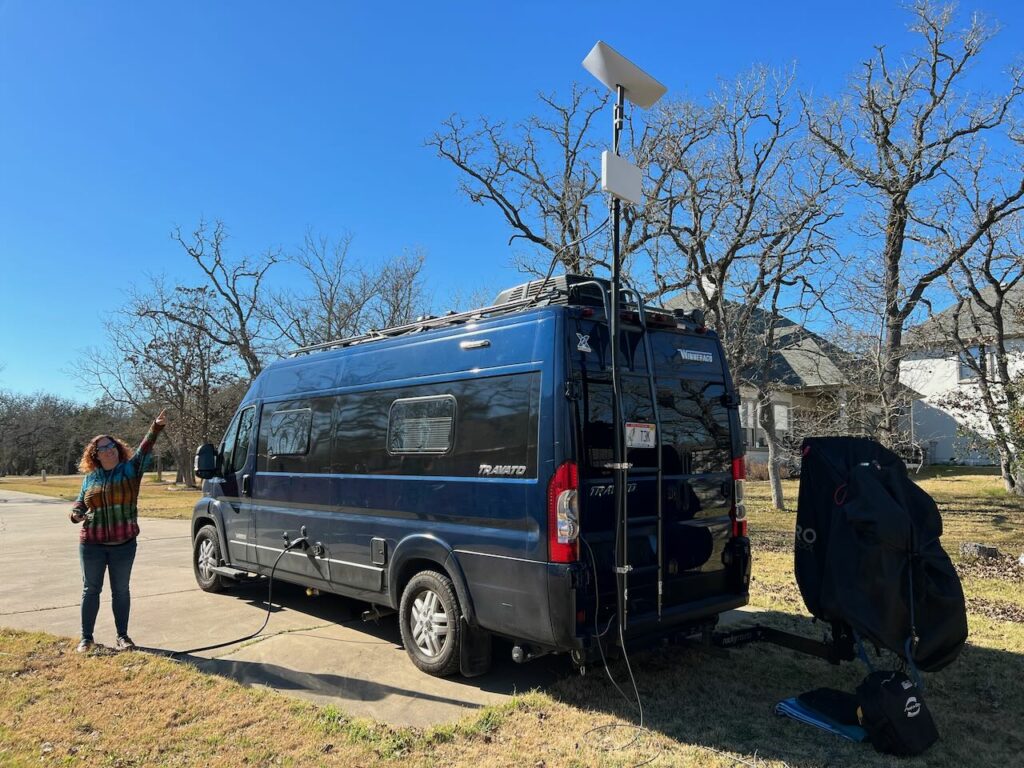
The Future of 4G LTE
This year the major carriers are finally shutting down their 3G networks - dooming some older hardware to obsolescence in the process.
Are 4G LTE networks and devices destined for the same fate anytime soon?
No - 4G will be around for a LONG time to come.
Most 4G hardware should still be able to connect for 10+ years into the future, if not longer.
The reason for this longevity is that 5G was designed from the start to layer on top of 4G/LTE (which stands for "long term evolution", after all) so that 4G and 5G can co-exist relatively seamlessly. In particular - carriers will be able to use Dynamic Spectrum Sharing (DSS) to split up legacy spectrum bands to divide capacity between 4G and 5G dynamically, so even as 4G bands get converted to service 5G devices older pre-5G devices will still remain useable.
In the long run - eventually 4G networks might experience some diminished coverage and speed as spectrum gets shifted towards 5G, but in the shorter term there is actually a lot of potential for 4G networks to keep getting faster with people switching to 5G relieving 4G network congestion.
In other words - don't plan on needing to toss out your 4G gear anytime soon, or feel reluctant to optimize on LTE in the near term future. Many legacy data plans from the carriers don't even support 5G at this time anyway.
Concluding Thoughts
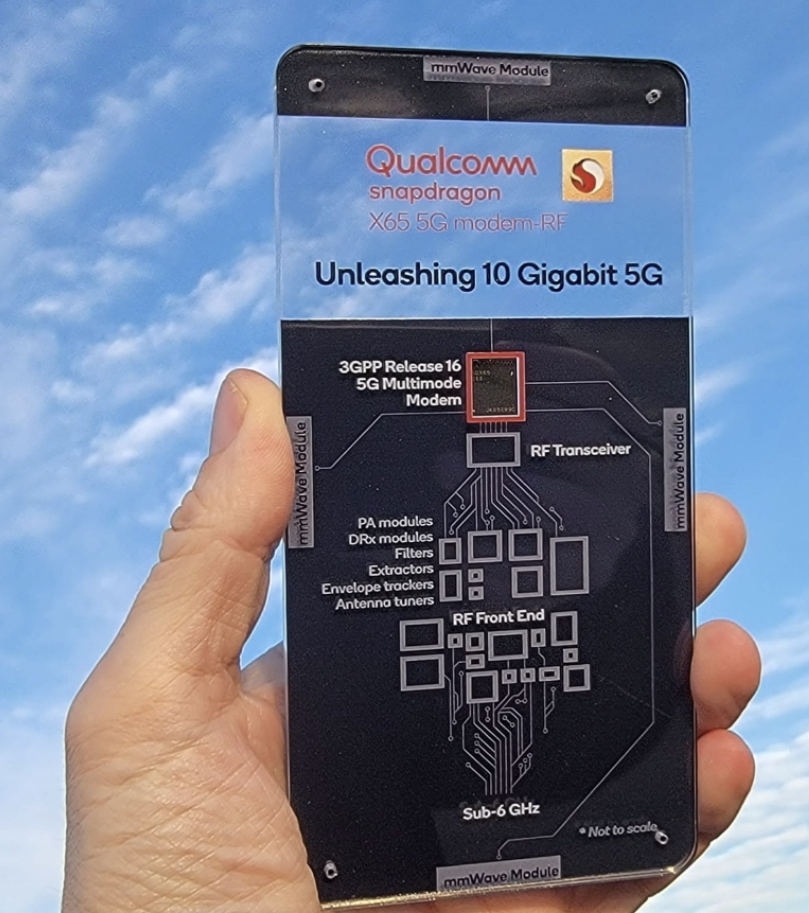
The potential for 5G is indeed exciting - and the experience of getting online on the go with 500 Mbps downloads and 100 Mbps uploads really is truly transformative... when you can find it.
But RVers and Cruisers still need to keep their expectations in check.
Great 5G performance like this relies on mid-band spectrum that drops off rapidly after just a few miles from a tower, so in the more remote locations many nomads travel through performance will often be nowhere near as impressive - even for years to come.
And particularly when it comes to cellular integrated routers and hotspots, we are still in the early days - and we are waiting for more advanced 5G options that are all around better, faster, and cheaper than the models that are out now.
The key is to not get too far ahead of yourself in embracing new technologies.
You need to ask yourself - what really makes sense for your needs, today?
Depending on how you answer that question - 5G gear might make sense for you now.
If you are a T-Mobile customer - 5G absolutely makes sense. T-Mobile's network is able to give a great 5G experience in a lot of places today, and they are still expanding fast.
If you are on Verizon - 2022 is the year that 5G starts to get really compelling now that C-Band is rolling out. But make sure your device supports n77.
And if you are on AT&T (or are for some reason waiting for Dish) - waiting another year before focusing on 5G gear is the smartest path forward.
There is however no huge reason to avoid the current generation of 5G devices - even if the network isn't ready to give you a 5G-worthy experience. At least every 5G device currently available will also give you the absolute best possible 4G experience too.
And it will probably be another year before we see significantly more advanced modems showing up in 5G cellular integrated routers. Hopefully, we'll start to see more carrier specific consumer level hotspots being released soon.
Further Reading
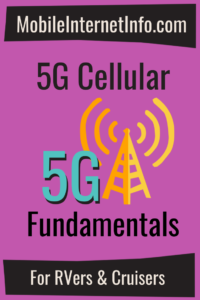 5G Cellular Fundamentals for Mobile Internet - Our featured guide will help you understand what 5G is all about.
5G Cellular Fundamentals for Mobile Internet - Our featured guide will help you understand what 5G is all about.- Understanding Cellular Frequencies - Our guide will help you understand what different frequency bands are, and how the differences between them can be so critical.
- 5G Cellular Resources - All of our guides & articles tracking 5G.
And here is all of our recent 5G related coverage:
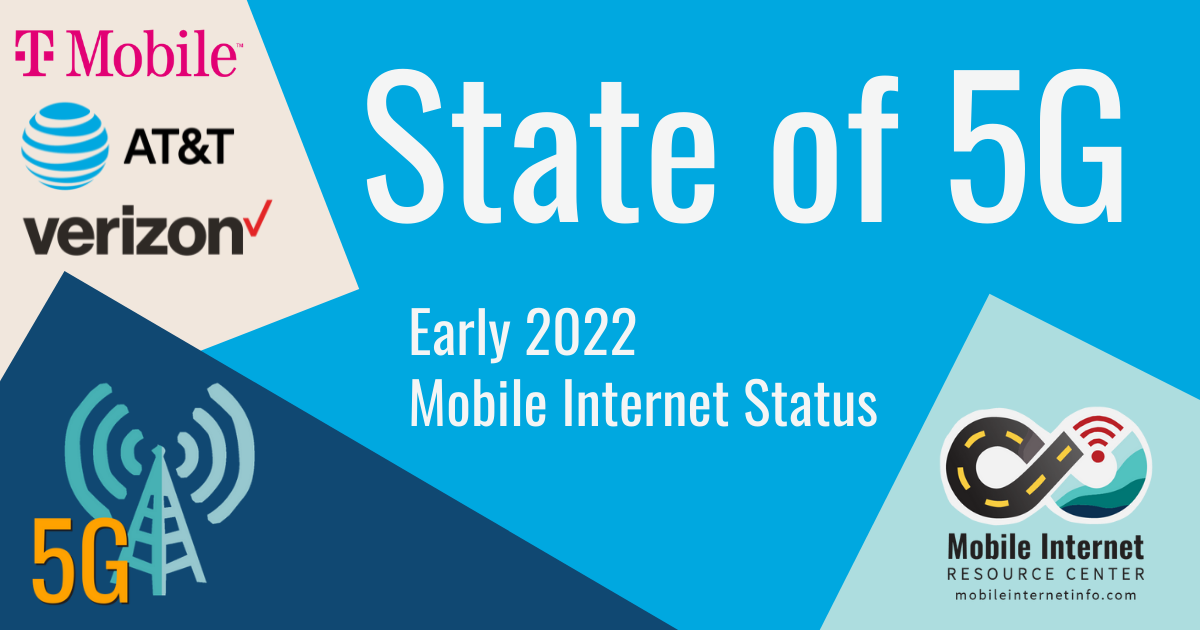







 Mobile Internet Resource Center (dba Two Steps Beyond LLC) is founded by Chris & Cherie of
Mobile Internet Resource Center (dba Two Steps Beyond LLC) is founded by Chris & Cherie of